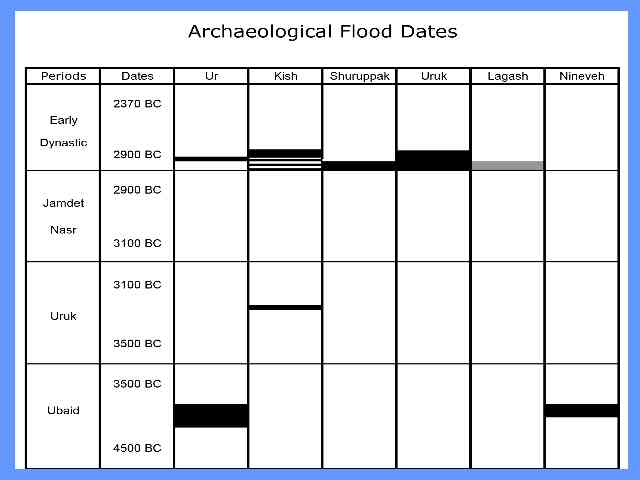The Genesis 6-9 flood account contains numerous words and phrases that are similar or even identical with other flood narratives such as Atrahasis, Ziusudra, and the eleventh tablet of Gilgamesh listed here in order of origination. There are twelve existing tablets about the exploits of the fifth king of Uruk in the post-flood era, Gilgamesh. All are inscribed in Sumerian with one exception written in Semitic Akkadian. The eleventh tablet features one of their own the flood survivor, “Utnapishtim,” (he who found long life).
"The gods commanded total destruction " - Atrahasis II, viii, 34
"… I will destroy them with the earth.” - Genesis 6:13
"He [Enki] told him of the coming of the flood. " - Atrahasis III, i, 37
"And God said onto Noah … I, even I, do bring a flood … " - Genesis 6:13, 17
“… the huge boat” - Ziusudra v, 207
“That ship shall be an ark. ” - Atrahasis x, 9
“Tear down this house, build a ship!” - Gilgamesh XI, 24
"Make thee an ark …" - Genesis 6:14
" pitch I poured into the inside" - Gilgamesh XI, 66
"… pitch it within and without with pitch. " - Genesis 6:14
“… he sent his family on board” - Atrahasis III, ii, 42
“… into the ship all my family and relatives” - Gilgamesh XI, 84
“Come thou and all thy house into the ark …” - Genesis 7:1
“… who protected the seed of mankind.” - Ziusudra vi, 259
"Bring into the ship the seed of all life.“ - Gilgamesh XI, 27
“… to keep seed alive …” - Genesis 7:3
“… animals which emerge from the earth” - Ziusudra vi, 253
“… all the wild creatures of the steppe” - Atrahasis DT, 42(w), 9
“The cattle of the field, the beast of the plain” - Gilgamesh XI, 85
"Of clean beasts and of beasts that are not clean …” - Genesis 7:8
“the storm had swept … for seven days and seven nights” - Ziusudra
“For seven days and seven nights came the storm” - Atrahasis III, iv, 24
"… after seven days … the waters of the flood were upon the earth.“ - Genesis 7:10

